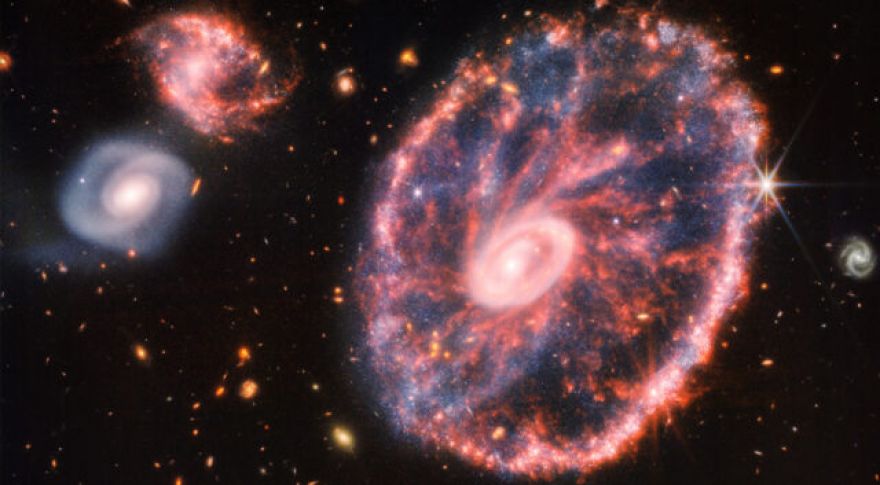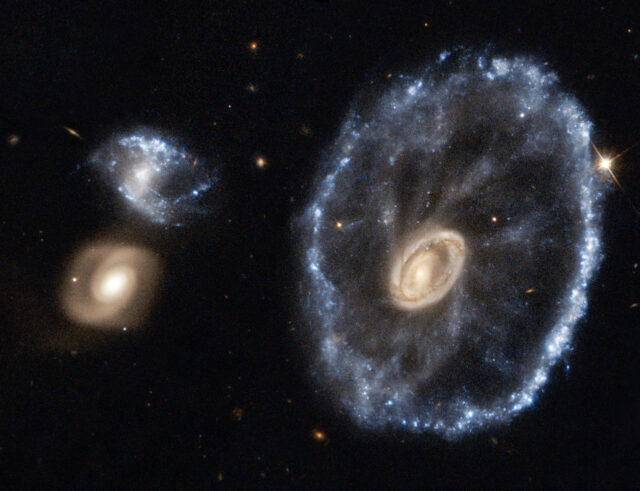
Webb Telescope Captures Stunning Image of the Cartwheel Galaxy
For years, we’ve been talking about all the amazing things the could do, and now it’s actually doing them. From its vantage out beyond the moon, Webb is turning its infrared eye toward far-away objects we’ve never been able to see before. It’s also providing images of well-known objects like the Cartwheel Galaxy (above) with an unprecedented level of detail.
The Cartwheel Galaxy is about 500 million light years away in the Sculptor constellation. This is the subject of intense study because it’s a rarity — a survivor of a massive collision oriented to give us a perfect view.
The Webb telescope was designed to operate in the infrared range so it could peer through clouds of dust and gas, and that’s exactly what it’s doing here. The above image is actually a composite of two images. The blue, orange, and yellow tints come from the primary NIRCam instrument, which operates from 0.6 to 5 microns. The blue and white colors come from Webb’s Mid-Infrared Instrument (MIRI).
, the central spiral is bright because it’s rich in established star clusters and hot dust. Following the collision about 440 million years ago, the external ring began expanding. As it expanded, it encountered intergalactic gasses that fueled star formation. Thus, the expanding ring is dominated by star formation and supernovas.

Hubble’s version of this image is much less sharp.
The image immediately above is Hubble’s most recent attempt at imaging the Cartwheel Galaxy from 2018. It’s certainly recognizable as the same object, but Webb picked up much more detail. For example, astronomers have noted the smoother distribution of older star populations in the core versus the clumpy nature of younger populations in the expanding ring. Neither of these was discernible in Hubble’s data. The red veins weaving through the galaxy are also much sharper in Webb’s image — you can barely see them with Hubble. NASA says these are like the skeleton of the Cartwheel Galaxy, composed mainly of hydrocarbons and silicate dust (similar to Earthside dust).
Astronomers believe the Cartwheel Galaxy was once much like our own Milky Way, and there are hints that Andromeda may be on a collision course with us (). By studying the Cartwheel Galaxy, we may be getting a preview of what will happen to our little corner of the cosmos in a billion years or so.
Now read: